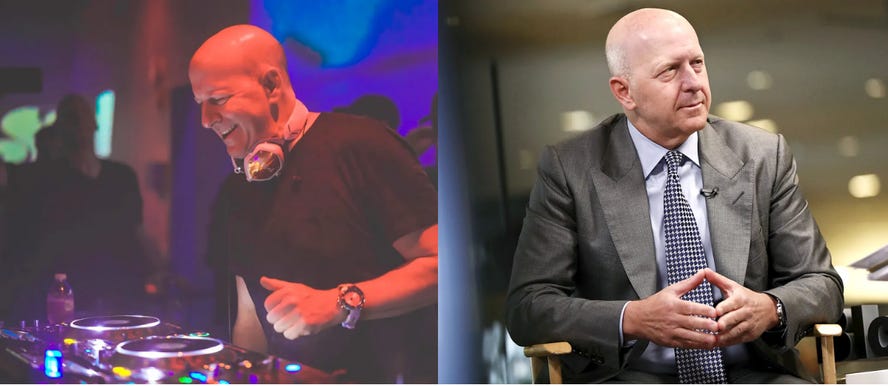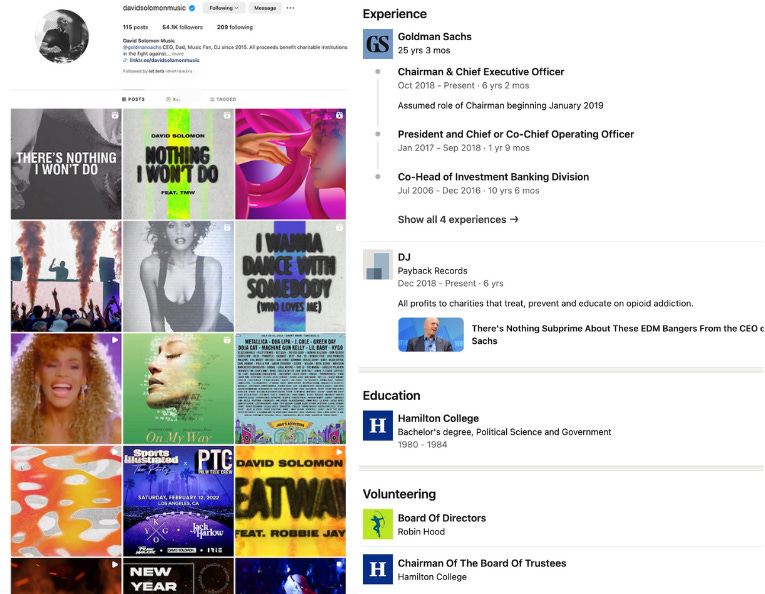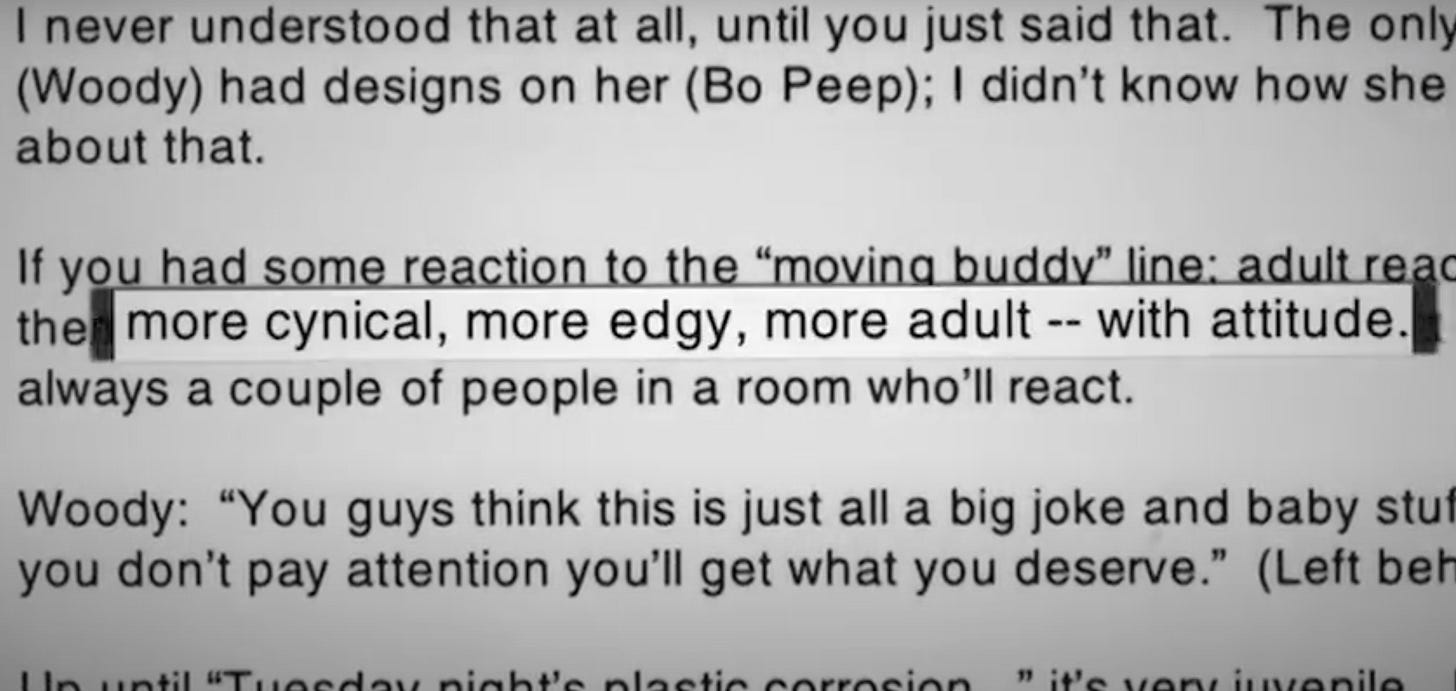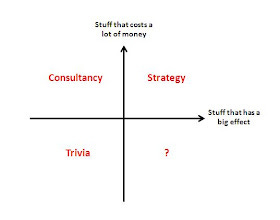The DJ CEO, the CEO DJ
Balance is about the tune you choose to play.
Life, as the Stoics teach us, is about finding harmony—balancing reason and emotion and practicing moderation in all things. They believed that extremes, whether too much or too little, disturb the peace of the soul. A balanced life brings contentment and strength, no matter what challenges we face.
Keith Richards, in his entertaining memoir Life from the Rolling Stones legend, often shares humorous and unexpected insights about living life to the fullest, unapologetically. He suggests that the key to life is recognising whether you're still humming a tune as you go.
He turns even the strangest ideas into lessons about enjoying life your own way.
“You never, ever, take the shepherd’s pie unless Keith’s broken the crust first.”- Mick Jagger said - referencing Keith’s unique pre-show ritual.
For keith, rituals like this were anchors amid the chaos of touring, offering a moment of comfort and readiness in an unpredictable world.
He once revealed that he prefers to fall asleep holding his guitar because “you never know when inspiration might strike.” I guess it’s his way to stay prepared for life’s unexpected bursts. This is, after all, how the legendary riff for "I Can’t Get No Satisfaction" was born.
Take David Solomon, CEO of Goldman Sachs, whose passion for DJing brought him both acclaim and criticism. Here’s a man leading one of the world’s most high-pressure firms while spinning tracks at Tomorrowland, Lollapalooza, and even his daughter’s wedding. But when the media buzz became too loud, he stepped back—not from the music, but from the limelight. His decision wasn’t about giving up what he loved; it was about recalibrating his balance.


It’s inspiring to see someone like Solomon embrace something so unconventional for Wall Street. While the financial world traditionally leans on golf, poker, triathlon as hobbies, Solomon chose to put himself out there in a way that highlighted his humanity. Critics may have questioned his priorities, but isn’t the real win in knowing when you’re in harmony with yourself?
He has pursued a DJing hobby under the name “DJ D-Sol.” He founded Payback Records in December 2018. All profits to charities that treat, prevent and educate on opioid addiction.
If I were a journalist, I’d write a piece not on his detractors, but on how Solomon’s passion for music makes him one of the most interesting figures in finance - a leader with a creative edge and a refreshing, human side. What a cool guy.
Balance isn’t about perfect symmetry. It’s about making sure we’re still humming, still moving, and still inspired - wherever you are.
For you, what brings you balance?
Beijos,
Babi
The Cruel Woody
How Collaboration, Intuition, and Staying True to Your Ideals Can Redefine Your Path
A few years ago, I read Creativity, Inc.: Overcoming the Unseen Forces That Stand in the Way of True Inspiration and I got to know some stories behind the creation of Pixar and its movies.
In the world of creativity, stories often begin rough, abrasive, and far from the polished narratives we come to love. Such was the case with Pixar's Toy Story and its early conception of Woody, a character who initially embodied cruelty rather than charm. Woody was an asshole.
Woody was a far cry from the lovable cowboy we know today. Initially envisioned as a sarcastic and authoritarian ventriloquist's dummy, Woody ruled Andy’s toys with manipulative cruelty. In one scene, Woody maliciously pushed Buzz out of a window.
The film’s tone was equally problematic, lacking the humor, heart, and warmth that would later define Pixar’s storytelling. Buzz Lightyear, too, was underdeveloped, written as a generic action hero with little depth or humor.
When Disney executives viewed this early version—dubbed the “Black Friday Reel”—they nearly canceled the project.
How the story got into this path?
The movie's storytelling took an edgy and aggressive turn following feedback from high-level executives, leading the team to make significant adjustments. This highlights an important lesson: never underestimate the power of intuition. Below part of the feedback received during the film's production.

“I was embarrassed with what was on the screen. I made it, I directed it, but it was a story filled with unhappy and mean people”
“Give us two weeks and we will turn the movie around”
John Lasseter - Chief Creative Officer Pixar
The Braintrust Effect
Pixar’s Braintrust, a collaborative team of directors and writers, became the film’s secret weapon. By combining artistic intuition with candid feedback, Toy Story became a testament to the power of collaboration, transforming a flawed narrative into a beloved classic.
Faced with potential disaster, the Braintrust helped reimagine Woody and Toy Story’s core narrative, focusing on emotional resonance and character development. Key changes included:
- Woody’s Redesign: Woody evolved into a flawed but well-meaning leader, grappling with jealousy and fear of being replaced. His rivalry with Buzz was softened, making him more relatable.
- Buzz’s Personality Shift: Buzz became a delusional yet endearing space ranger, adding humor and depth to his character arc.
- Thematic Focus: The film embraced themes of friendship, acceptance, and growth. Woody and Buzz’s journey from rivals to allies became its emotional core.
- Emotional Resonance: The Braintrust emphasized relatability and warmth, ensuring the story connected deeply with audiences.
These changes not only salvaged the project but also set a new standard for Pixar’s storytelling approach.
My Journey with Letter B
When I started creating Letter B, I began by sketching the brand's story, a wacky world, where animals dressed as humans became vivid metaphors for our artistic selves, bringing the narrative to life. Each character comes with their own story, highlighting their favorite hobbies and a touch of their personal background. The first animal I drew was a rabbit, chosen because it symbolises renewal, being one of the first creatures to emerge after winter in the spring. Interestingly, some people compared the drawings to those of Beatrix Potter, the renowned English children’s author.
Intrigued by the comparison, I delved into her story and discovered that she faced numerous challenges and rejections before finally publishing her beloved books. Her perseverance and creativity have since become a source of inspiration.
A Shared Lesson
The origin of Toy Story and Beatrix Potter’s literary journey remind us that everything starts as a rough draft. Through collaboration, innovation, and perseverance, creators can transform even the most unpolished beginnings into stories that endure for generations.
Beijos,
Babi
https://barbaracraveiro.substack.com/p/the-cruel-woody
Maria Alice, George, Steve, Yogananda
Connecting the Dots: Life Lessons from Yogananda
“Reform yourself and you will have reformed thousands.”
“Human will is the dynamo of existence”
“Willpower is what changes thought into energy”
Paramahansa Yogananda
Yogananda (1893–1952) was a spiritual teacher and yogi, known for bringing teachings of Kriya Yoga and meditation to the West and for his book Autobiography of a Yogi, which has inspired millions globally.
In 2019, a year after my divorce, I had begun exploring Buddhism, my mind brimming with questions that felt almost impossible to answer. Then one day, a dear friend recommended a book her mother—a calming, wise doctor—held in high regard. Curious and seeking guidance, I downloaded the book on my Kindle.
Yogis like Yogananda teach us to live in the present, to find beauty in each moment, and to cultivate a sense of balance, inner peace, and unity with the world around us. Over the years, this book has changed not only how I see my personal life but my professional life as well.
Here are a few of Yogananda's teachings and the documentary Awake: The Life of Yogananda provides a beautiful overview of his life and teachings.
- Self-Discipline: Staying focused on meaningful goals.
- Purpose-Driven Work: Crafting missions that genuinely engage both employees and customers.
- Servant Leadership: Yogananda's humility reminds me of The Servant, a book my father gave me at 17. His teachings reflect that true leadership is about supporting others and prioritizing shared goals.
- Mindfulness and Emotional Intelligence: Yogananda's insights on self-awareness and empathy help leaders manage stress and communicate with clarity and compassion.
- Adaptability: his openness to different cultures encourages us to be flexible, embracing new ideas and perspectives.
- Holistic Success: true success goes beyond profit, encouraging leaders to consider well-being, community impact, and ethical practices. This wisdom inspires leaders to pursue not only financial success but also a meaningful impact on society.
This book had a special place in the lives of so many people…
- George Harrison was inspired by Yogananda’s teachings and his spiritual journey and wrote his song "My Sweet Lord" - an international #1 hit by the end of 1970.
- Steve Jobs kept Autobiography of a Yogi—apparently the only book on his iPad—and reread it yearly, asking for it to be shared at his memorial.
He drew on Yogananda’s wisdom to fuse ancient teachings with modern technology, aiming to unlock human potential.
“You can’t connect the dots looking forward, only looking backward.”
Jobs - Stanford speech
Thank you, Maria Alice, for opening my eyes to a brighter and wiser world through this masterpiece—a book that will remain a source of guidance, comfort, and self-love for years to come.
Beijos
Babi
https://barbaracraveiro.substack.com/p/maria-alice-george-steve-yogananda
Life design
Shaping a Purposeful and Authentic Path
Think of it like the 90s, dialing through morning radio, tuning out the fuzz until you hit that perfect station. Life Design is all about those daily choices that truly reflect who you are and what you want. It’s about finding those moments that make life yours.
The concept was introduced by Bill Burnett and Dave Evans at Stanford University and elaborated upon in their book ‘Designing Your Life‘. They also offer a course on CreativeLive, where they guide participants through the Life Design process.
Life Design incorporates design thinking methods and journaling to address significant questions and make important decisions regarding various aspects of one’s life, including education, career, and overall purpose.
Their principle that “everyone is a maker” reminds us that each of us contributes uniquely to the world through creativity, innovation, and problem-solving. Here, “payment” isn’t just financial; it’s about the value of impact, joy, and authenticity. This approach reframes success as the meaningful change we bring to others, measuring fulfillment by the heart rather than the wallet.
In this video, they discuss the "three versions of your life" exercise. It involves imagining three paths over the next five years: one that follows your current path, another with a major shift, and a third that's bold and imaginative. This exercise promotes reflection and creativity, helping you explore different futures and clarify goals that align with your values.
The Life Design journey starts with clarity—understanding your current “location” and destination, much like using Google Maps. From there, you explore four foundational areas: health, work, play, and love. Health encompasses physical and emotional well-being; work includes paid and volunteer efforts; play means enjoyment for its own sake; and love focuses on personal connections.
It’s a process, and it takes time. Discovering your strengths, your passions, and quieting the world’s noise to hear your own rhythm are all part of designing a well-lived life.
Passion is the result of a well-designed life, not the cause.
Beijos,
Babi
https://barbaracraveiro.substack.com/p/life-design
Architects
The complexity, simplicity and beauty of their work
The architect acts as a mediator between technical requirements, human needs, and cultural context. Every architectural decision is an act problem-solving that shapes the physical world and the human experiences within it.
Iconic structures demonstrate how architectural decisions reflect broader cultural, functional, and aesthetic considerations. They are cultural statements. Decisions about form, materials, and spatial arrangement reflect societal values, aspirations, and the intended identity of a place. Architects design spaces that guide people's behaviors, perceptions, and interactions.
- Plaza Athénée - Paris. Their Cour Jardin combines the grandeur of traditional Parisian architecture with modern luxury. The design pays homage to classic French garden design principles, characterised by symmetry, order, and a sense of refined beauty.
- Marina Bay Sands - Singapore, designed by Moshe Safdie, it’s one of the most complex architectural structures in the world. Marina Bay is Safdie's attempt to humanise a mega-scale project and weave it into the existing urban fabric.
- Heydar Aliyev Centre - Baku, Azerbaijan, is an architectural masterpiece designed by the renowned architect Zaha Hadid. Completed in 2012, the building is famous for its fluid, wave-like structure that defies traditional architectural conventions.
- Bunkers - Billionaires are increasingly building extravagant doomsday bunkers, driven by a mix of fear, luxury, and a desire to maintain control in uncertain times. These bunkers are not just simple underground shelters but are highly sophisticated structures featuring luxurious amenities like swimming pools, movie theaters, gyms, and even defensive measures such as moats and water cannons.
Matthew Frederick in 101 Things I Learned in Architecture School outlines how architects operate at different levels of knowing—Simplicity, Complexity, and Informed Simplicity. This progression reflects the architect's journey through decision-making, moving from initial, often simple ideas to more complex analyses and finally to refined. It’s about finding order in complexity.
Bravo to architects!
They combine knowledge from engineering, aesthetics, human behavior, and environmental impact to make well-rounded decisions, leaving a lasting mark on the world. Every structure, whether a humble home or a grand monument, tells a story of the society that built it, reflecting values, aspirations, and the challenges of its time.
Through thoughtful design, architects shape not only our built environment but also the ways we live, work, and interact within these spaces.
"A doctor can bury his mistakes but an architect can only advise his clients to plant vines."
-Frank Lloyd Wright
Beijos,
Babi
https://barbaracraveiro.substack.com/p/architects
Chief Detail Officer
Doing a lot with little - making it weird and fun.
A friend from the venture capital world recommended me a book from Rory Sutherland, a prominent figure at Ogilvy - Alchemy: The Magic of Original Thinking in a World of Mind-Numbing Conformity Curious about the author, I dug deeper into his ideas, and one of his key arguments stood out to me: organisations often underestimate the value of small, seemingly minor changes. Sutherland highlights a common bias in companies where big problems are assumed to need large, costly solutions, typically devised by top executives. However, he argues that small, creative tweaks can often lead to surprisingly significant results.
This brings us to the idea of the Chief Detail Officer —a role dedicated to identifying those small, low-cost opportunities that have tremendous impact, and ensuring they are executed correctly and consistently.

Some examples:
- American Airlines determined that eliminating one olive from each passenger’s salad plate would reduce costs by $40,000.
- MailChimp ran a playful advertising campaign where they intentionally mispronounced their own name. The campaign was quirky and memorable. It helped MailChimp establish itself as a fun and creative company, attracting small businesses and creative professionals who appreciated the lightheartedness. Watch here.
- Dollar Shave Club: In 2012, Dollar Shave Club launched with a hilarious, low-budget video titled "Our Blades Are F* Great." The video featured the company’s CEO delivering deadpan humor about the absurdity of overpriced razors. The video went viral almost immediately. It was acquired and then sold by Unilever.
- Wendy’s social media team, especially on Twitter, became famous for its witty, savage roasts of both customers and competitors. They would humorously respond to customer complaints and engage in playful banter with other fast-food chains.
- Southwest Airlines is known for its flight attendants who deliver safety announcements with a humorous twist. This approach has contributed to Southwest's reputation as a fun, customer-friendly airline, helping to drive customer loyalty and differentiate it from other carriers.
- Skittles' long-running "Taste the Rainbow" campaign is filled with bizarre, humorous ads that often make little sense but are highly entertaining. The campaign became iconic, helping to solidify Skittles as a fun, playful brand, and driving increased sales and brand loyalty.
- Cards Against Humanity, a party game company, is known for its absurd and humorous Black Friday stunts. These ridiculous and humorous campaigns generated significant media coverage and public attention. One of the most infamous pranks happened in 2016 when the company ran a campaign called the "Holiday Hole." They simply asked people to donate money to fund digging a giant, pointless hole in the ground with no purpose other than to keep digging as long as the donations kept coming in.
Well, a little weirdness can go a long way. Who knows? Maybe I’ll channel my inner Chief Detail Officer and start making small, absurd changes in my own life—while having a good laugh about it.
“In a mad world, only the mad are sane.”
Akira Kurosawa
“Find out who you are and do it for purpose”
Dolly Parton
Beijos,
Babi
The feelings of creating a new business
Starting can be overwhelming with so many ideas swirling in your mind, waiting to be transformed into reality.
Unlike typical entrepreneurship resources, I want to delve into the emotional aspect of the journey.
Initially, self-doubt creeps in. We question if anyone would be interested in what we want to create. Fear holds us back from pursuing our dreams, and we consider giving up.
The urge to quit may last a few minutes, hours, or even days. Eventually, your idea resurfaces, and you can approach it with a clearer perspective, refining your plans.
It's a constant swing between impostor syndrome and overconfidence.
Writing things down is crucial. When you document your plans:
- You see the messiness and identify areas for improvement. This stage may take months.
- You gain the confidence to move forward!
With a clear goal and newfound confidence, you believe in your ability to succeed. The next step is to break down the goal into actionable steps. There’s no right or wrong way to do this. We often procrastinate on tasks that we’re uncertain about or lack the necessary resources (money, skills, time) to tackle.
Do what you can, and your confidence will grow through the process, even if it deviates from what you initially envisioned. Life doesn’t always follow a linear path, so why should a business plan?
It’s time to seek honest feedback from trusted friends. It’s a vulnerable moment. Prepare a set of questions, with the most crucial one being, “Would you use/consume this product?” Brace yourself, as you may need to make both minor and major adjustments.
This feedback loop should continue indefinitely. Select the most constructive feedback and carry it with you—it becomes part of your brand. Engaging with clients not only benefits the founders but also allows them to be a part of an exciting journey.
Don’t forget to take breaks and engage in activities that bring you joy. Hobbies, quality time with family and friends—these moments are well-deserved rewards for your hard work.
Discover few resources that rejuvenate your energy—whether it's a supportive LinkedIn community, inspiring articles, podcasts, or books. Avoid overwhelming yourself; too much information can be distracting and stressful. These resources should serve as a gentle push or a source of renewed energy without drowning you.
Self-knowledge is crucial because there will be times when inspiration and motivation wane. Understanding yourself helps you identify the root causes behind these moments. It’s important to develop coping mechanisms to overcome such hurdles.
Don’t forget to have fun. We should fall in love with the process, not just the end goal.
“The universe will reward you for taking risks on its behalf.”- Shakti Gawain.
“Just don’t give up trying to do what you really want to do. Where there is love and inspiration, I don’t think you can go wrong.” – Ella Fitzgerald.
Beijos,
Babi

